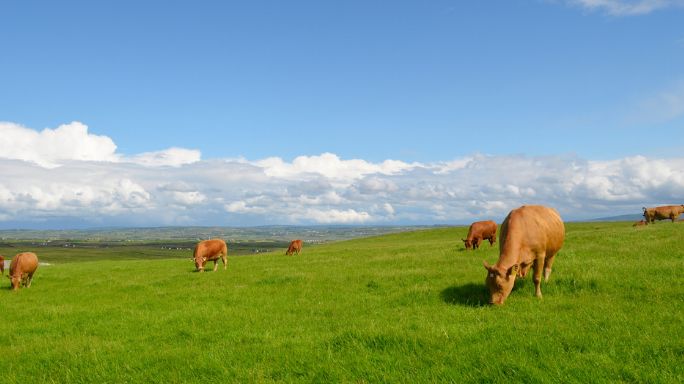Top tips for finishing cattle at grass

Over the next few months, a substantial number of beef cattle will be slaughtered off grass.
When considering whether or not to finish cattle at grass, several factors should be taken into consideration. Firstly, identify cattle that can be finished at grass. This decision may be based on gender, breed type, and the animal’s present condition. Regardless of the cattle type being finished, meeting market requirements is critical to obtaining the best price when finishing. As conformation and appropriate fat cover are critically important to specific markets, ensure those animals selected for grass-based finishing can achieve such market requirements.
When cattle are housed for finishing, the cost per kg of live-weight gain typically increases by up to 50%, compared to finishing cattle directly off grass. Feed costs account for 75% of variable costs in Irish beef production systems.
In 2022, Teagasc estimated grazed grass to cost circa €125/tonne of dry matter, with grass silage costing approximately double that and concentrate prices trending well over three times the cost of grass. Therefore, in the current climate, optimizing the contribution of grazed grass within the animal’s diet and using silage and concentrates as strategically as possible will aid in increasing margins within beef finishing systems.
Energy is the main driver of live weight gain as it encourages fat cover in cattle, and should be maximised throughout the finishing period. At grass this is achieved by utilising top-quality grazed grass of 1200-1600 kg DM/ha throughout the grazing season.
Supplementation at this time of year is recommended to speed up the finishing of cattle at a rate of 3/4 kg where grass quality is adequate or 5-6kg where grass quality is poor or supply is low. A high-energy, low-protein supplement will suffice at this time of year as protein content in grass will be sufficient for finishing cattle. However, not all cattle need concentrates to achieve the correct fat cover. Heifers and steers of traditional beef breeds, which are early maturing such as Angus and Hereford, may not need supplementation during July or August.
Supplementation with concentrates is recommended even for those cattle that cannot finish at pasture such as later maturing animals. Feeding supplements are often worthwhile as they reduce the requirement for more costly silage later. Also, the ‘build-up’ period to a concentrate finishing diet can be implemented at grass for those groups returning to the shed for indoor finishing.
For more information on finishing cattle at grass, please contact your local Tirlán representative.
First Published 17 June 2024
Tagged with: Beef